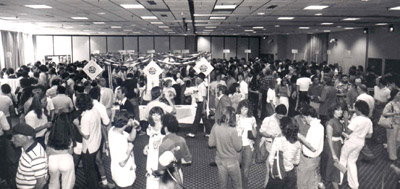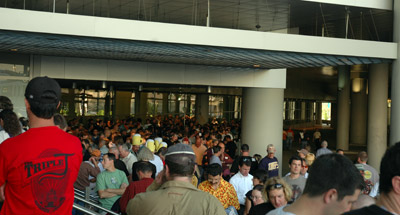New York Magazine – high profile in a high impact market – has a story about beer. Before you begin celebrating with hopes another mainstream publication gets it read what Stephen Beaumont has to say at World of Beer. (The magazine piece is online, but you should read his commentary, then use the link he provides to the article.)
Beaumont points out that this is not an altogether terrible story, but that the end result of rounding up what the magazine calls “untrained but enthusiastic drinking aficionados” can frustrate those of us who know something about the beers described. He writes:
Which makes me wonder if these same magazines would assemble a tasting panel to cast judgment on a mix of chardonnays, ports, Champagnes, sherries and first growth Bordeaux. Somehow, I think not.
Bingo. Quite honestly, I think it is easier for somebody to “understand” when they taste a great wine than it may be when they taste a great beer – because beer covers a wider spectrum of flavors. Certainly few magazines are likely to take a couple of chardonnays, a single viognier, a sauvignon blanc and lump them in a group with a catchy name (such as “Ordering in” – one the NY mag uses in “Ales in Comparison”).
I have a category here for beer and wine (and will file this post there), but the comparisons can make me uneasy. There are times when a glass of wine tastes better than a glass of beer (though I could add vice versa). A bottle of wine may have attributes than no bottle of beer shares. That’s why comparing Wine, the category to Beer, the category gives me reason to pause.
Attitudes toward the two, those can be compared, and that’s why Beaumont’s conclusion that “most of those procedural errors could be easily fixed if editors just instructed their staff to treat their beer tastings as seriously as they would a panel assessment of wines” rings so true. Also, if they had to foot the bill for 21 bottles of top-line wine (17 really, plus a few for Yellow Tail and friends) then they might have thought twice.
We just returned from Northern California, where we drank truly wonderful wine and equally wonderful beer. One difference is that the beer was cheaper. We’re not talking $300 and $500 bottles of wine (at the winery – forget the restaurant wine lists) but really good Sonoma County wines that cost $20-$35 a bottle (750ml).
Yet if you are looking for that “something else” in the bottle – could be terroir or whatever reason some people use to justify buying trophy wines – then nuance (or creativity or regard for tradition) is just at prominent in Sonoma Country beers such as Russian River Damnation or Bear Republic Racer 5 as it is in the best wines. Damnation costs $8 for a 750ml bottle, Racer 5 just over $3 for a 22-ounce bottle (and $7.99 for a six-pack).
Those beers should probably cost more, and do by the time they get to New York City. I’m not rooting for them to command wine prices just so they’ll be taken seriously, but it going to take something to keep one from being dismissed because it “looks like road tar.”
The magazine panelists dissed some excellent beers (be sure you read Beaumont’s detailed rebuttal), so it’s not like they weren’t getting the good stuff. That’s the discouraging part.

